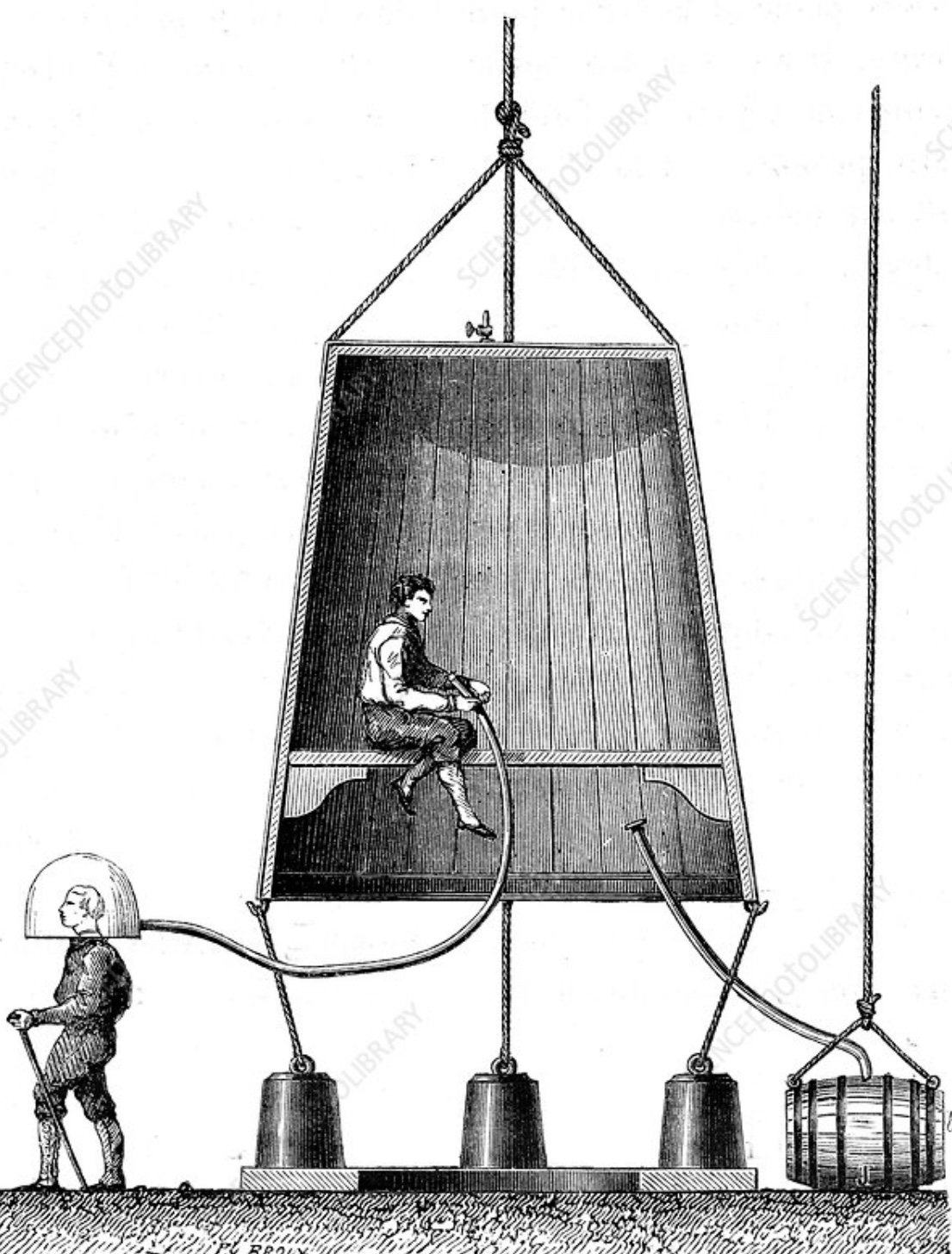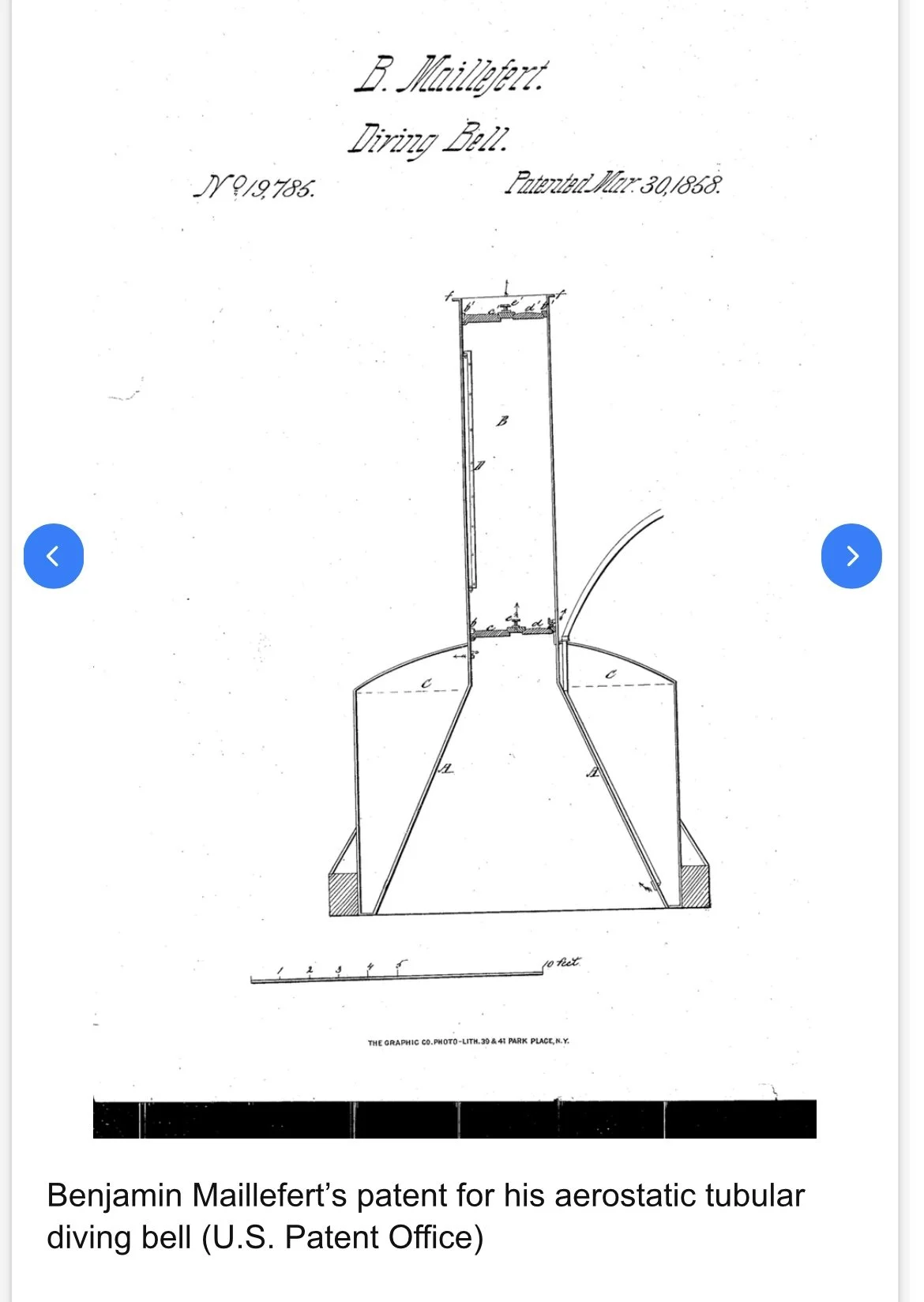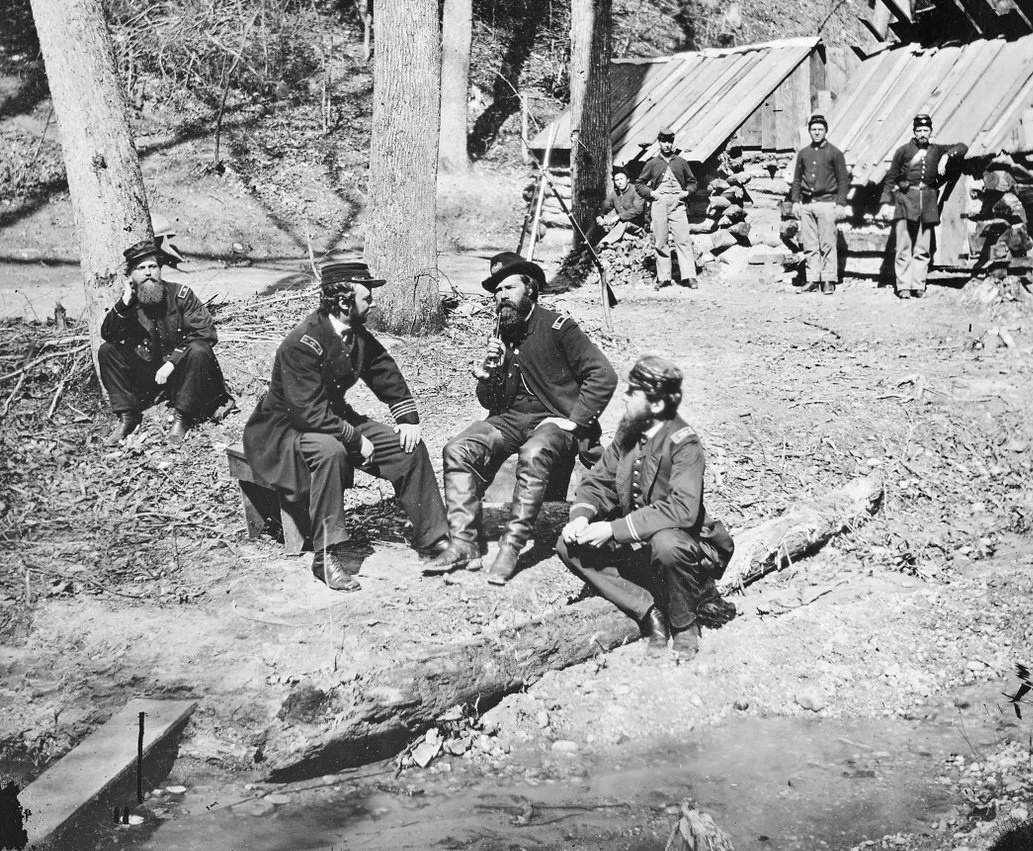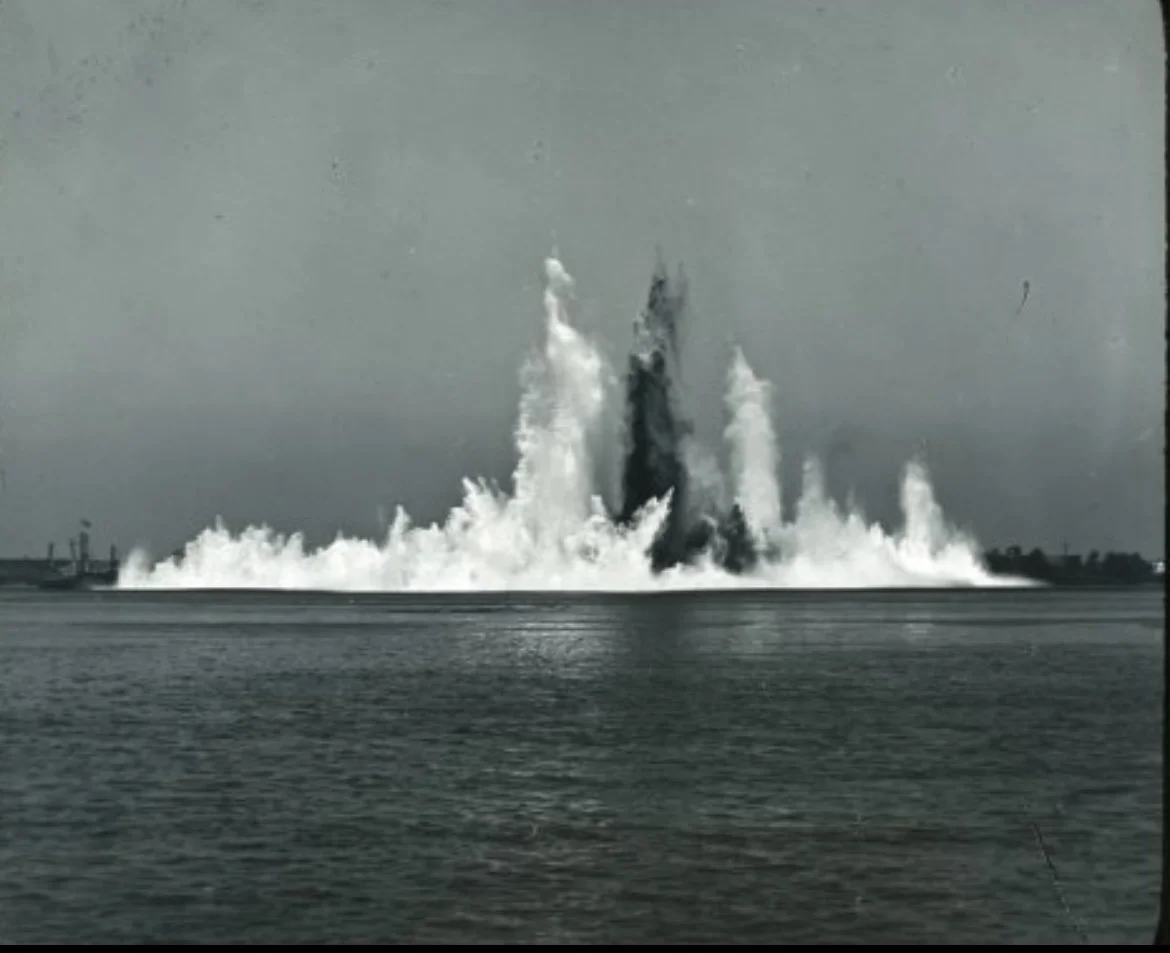Benjamin Maillefert Prt 2: A Multifaceted Contributor to Naval Engineering
A Scientific America article on Maillefert’s diving innovations.
Article by Brete Murphy
Maillefert’s Diving Bell: Innovation in Underwater Exploration
During the turbulent years of the American Civil War, the Union Navy played an essential role in securing key strategic waterways and coastlines crucial for the war effort. Among the notable figures who significantly aided the Union Navy was Benjamin Maillefert, an engineer, explossive expert, and salvage expert whose contributions were invaluable to naval operations. His knowledge of maritime salvage, combined with his engineering skills, made him an asset in overcoming various challenges posed by the conflict. It is with pride that the members of Advance Service Mizpah lodge No 586, in Astoria, New York, bring you this article on the many deeds of Brother Benjamin S. H. Maillefert,
Maillefert had pioneered a diving bell and diving apparatuses just before the start of the Civil War, an innovative invention that revolutionized underwater salvage operations. Patented in 1858, Maillefert's diving bell featured an aerostatic tubular structure equipped with an air reservoir that provided buoyancy, enhancing diver safety and maneuverability underwater.
In an era where underwater exploration was becoming increasingly vital due to expanding maritime trade and naval conflicts, Maillefert identified the need for reliable technologies to assist divers in accessing submerged wrecks. His diving bell was designed to improve buoyancy and control, enabling more efficient recovery of cargo and other valuable materials from depths that were previously challenging to navigate. This invention not only showcased Maillefert's ingenuity but also illustrated the intersection of engineering advancements with the practical challenges of maritime salvage.
The diving bell laid the groundwork for subsequent developments in underwater engineering and exploration, making a lasting impact on future diving techniques and technologies.
A hand colored photograph of Maillefert
Liaison and Salvor for the Union Navy During the Civil War
Maillefert's work extended beyond merely recovering sunken vessels; he actively collaborated with Union naval commanders by providing vital intelligence on navigational hazards and conditions that could affect naval movements. His ability to map underwater obstacles and submerged wrecks was especially noteworthy, as these insights were critical for ensuring the safe passage of Union ships through treacherous waters.
Communications between Maillefert and the Union Navy consisted of both formal reports and informal correspondence, reflecting the trust placed in his expertise. His assessments allowed naval commanders to make informed decisions, enhancing the maneuverability of vessels during blockade runs and other critical engagements.
As the war progressed, Maillefert's insights into naval engagements and logistical hurdles became increasingly indispensable. His collaboration exemplified the vital role that civilian specialists played in supporting military operations, illustrating how engineering, salvaging, and effective communication could work collaboratively to bolster the Union's naval strategy.
Maillefert instructing naval officers on torpedo safety during the civil war.
Benjamin Maillefert and His Work with Torpedoes
The evolution of naval warfare during the Civil War introduced the widespread use of torpedoes (underwater mines designed to damage or sink enemy ships.) Maillefert emerged as a critical figure in this area, contributing his expertise to the development and deployment of these explosive devices.
With both the Union and Confederate navies seeking innovative methods to enhance their combat effectiveness, Maillefert’s experience with underwater hazards and his patent on an improved torpedo were crucial. He played a significant role in the planning and placement of torpedoes in strategic locations, aiming to thwart Confederate naval advances. In addition to positioning these devices, Maillefert educated Union forces about their operation and the necessity of maintaining vigilance around them, thus shaping naval tactics and coastal defense strategies.
Maillefert's work was fraught with challenges; the volatile nature of torpedoes posed risks not only to enemy ships but also to personnel involved in their deployment. Nevertheless, he successfully navigated these complexities, ensuring that safety protocols were maintained while advancing the Union's tactical objectives. His contributions, especially in areas such as Charleston Harbor, demonstrated the strategic importance of torpedoes and underscored his influence on the naval landscape during the conflict.
Actual image of the blasting of Hellgate
Blasting Hell Gate: Overcoming Navigational Challenges
In the 1860s, New York City's waters posed considerable navigational hazards, particularly in the strait known as Hell Gate. This channel was infamous for its rocky obstructions and dangerous currents, threatening maritime traffic. Maillefert's role as a civil engineer became pivotal as he sought to address these challenges through innovative blasting techniques to clear rocks obstructing navigation.
Beginning his assessments in the 1840s, Maillefert employed controlled explosions to safely remove hazardous formations. Although his initial efforts encountered challenges due to the unpredictable tides and the intricacies of managing underwater blasts, his work laid the foundation for further clearing efforts.
As the Civil War progressed, the military recognized the strategic importance of Hell Gate for troop movements and supply lines. Maillefert was sent back to the shores of Astoria, New York near the end of the Civil War to innovate blasting techniques on the northern outlet of Hellgate, since the turbulent nature of the channel proved too difficult for standard drilling techniques. Maillefert’s new technique of lowering 125 pound charges with a long water proof, electric trigger made for quicker work. However, this mode of operation limited the depth he could reach, and his material costs were high. Consequently, the U.S. Army Corps of Engineers took over the project, utilizing Maillefert’s earlier work and expertise.
Incidentally, Julius H. Striedinger, also a member of Advance Lodge 635, was a notable military engineer who played a significant role in the Hellgate improvement projects after Mailleferts initial work. By 1868, the military completed the blasting operations, significantly enhancing navigation into New York Harbor. This military-led initiative not only alleviated navigational hazards but also ensured that waters could accommodate the rising demands for military and commercial shipping during this critical period.
A Lasting Legacy
Benjamin Maillefert's diverse contributions during the Civil War and in the years following underscore the importance of innovative engineering and salvage operations in overcoming the maritime challenges of the era. His work with the Union Navy, torpedoes, diving bells, and the blasting of Hell Gate showcases a multifaceted approach to problem-solving that had a lasting impact on naval operations and maritime infrastructure.
Through strategic collaborations, pioneering inventions, and dedication to enhancing navigational safety, Maillefert went on to play a vital role in advancing the capabilities of the Union Navy while facilitating economic growth in post-war America.
Following the Civil War, Charleston, South Carolina, faced significant challenges due to wartime obstructions in its harbor, which hampered navigation and threatened maritime trade. In 1873, salvager Benjamin Maillefert was pivotal in clearing these hazards through maritime salvage operations. Tasked with removing wrecks, including the Stono, Prince Albert, and the Palmetto State, Maillefert successfully navigated treacherous conditions to restore safe passage in the harbor. By 1874, his efforts significantly improved navigational depths, revitalizing Charleston’s maritime activities and fostering economic growth. Maillefert’s work exemplified the importance of effective salvage operations, contributing to urban development and the long-term commitment to navigational safety in post-war America.
He went on to clear ship wrecks from the Chestatee river near Dahlonega, Georgia, and cleared many ship wrecks from Lake Erie, among his more notable reconstruction efforts. His legacy highlights how expert knowledge and creativity can converge to address pressing challenges, shaping the future of maritime exploration and engineering.









